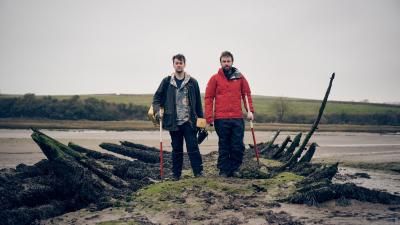University of Southampton
United Kingdom.
This page is approximately a 2 minute read

Every shipwreck has a story to tell - of people and trade, seascapes and storms, adventure and heartbreak.
Jack Pink Senior Research Assistant, University of Southampton
Unearthing the past to shape the future
“Thousands of shipwrecks lie in the waters around Britain,” says Jack, a maritime archaeologist by profession. “But these are a lot more than relics of a forgotten age or hazards to modern day shipping. Thanks to the records of the Lloyd’s Register Foundation’s Heritage Centre, these broken hulls and rotting timbers can tell real world stories that can teach us about everything from family histories to the evolution of maritime safety.”
The Heritage Centre’s mission is to inform, educate, influence and inspire policy makers, researchers and business leaders – helping them learn lessons from the past that can help shape a safer ocean economy for tomorrow.
Jack was so inspired by the wealth of information in the Heritage Centre archives that during lockdown he organised a course to help participants navigate through the extensive online catalogue for their own research. “All of Britain’s maritime history is there, with material covering over 260 years of ships, their journeys and often their ends,” he explains. “The Heritage Visitor Centre is open to all, offering a unique collection of resources from the reference library and corporate archives – it’s invaluable for historians, archaeologists and anybody interested in the history of our oceans.”
Jack cites a tale of two vessels to highlight how the Heritage Centre archive adds to the sum of our knowledge. “The Ocean and the Rhoda Mary were similar ships, built a few years apart in the 19th Century,” he says. “The Heritage Centre helped researchers from the University of Southampton, supported by CITiZAN, identify their wrecks from multiple possibilities, as well as who owned and sailed them, where they were going and what they were carrying. Using ship survey reports, we can then compare and contrast the technologies used in their construction and map how and when innovations such as copper-alloy fastenings, copper sheathing and iron frames became common currency.”
“Through the Heritage Centre, we can see how shipbuilding and safety have evolved over the years, and understand how the lessons of the past are contributing to making the maritime world a safer place for everybody."
Continue reading
Maritime Decarbonisation Hub
The Decarbonisation Hub is leading the maritime industry’s shift to zero-emission vessels by 2030, driving global collaboration on future fuels and sustainability.
Read previous articleEngineering X
A partnership between UNHLC and Engineering X is tackling Africa's open waste burning, aiming to reduce it by 60% by 2030 and eliminate it by 2040 for a safer future.
Read next article
